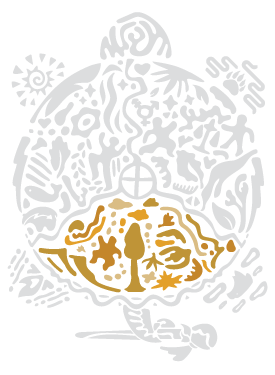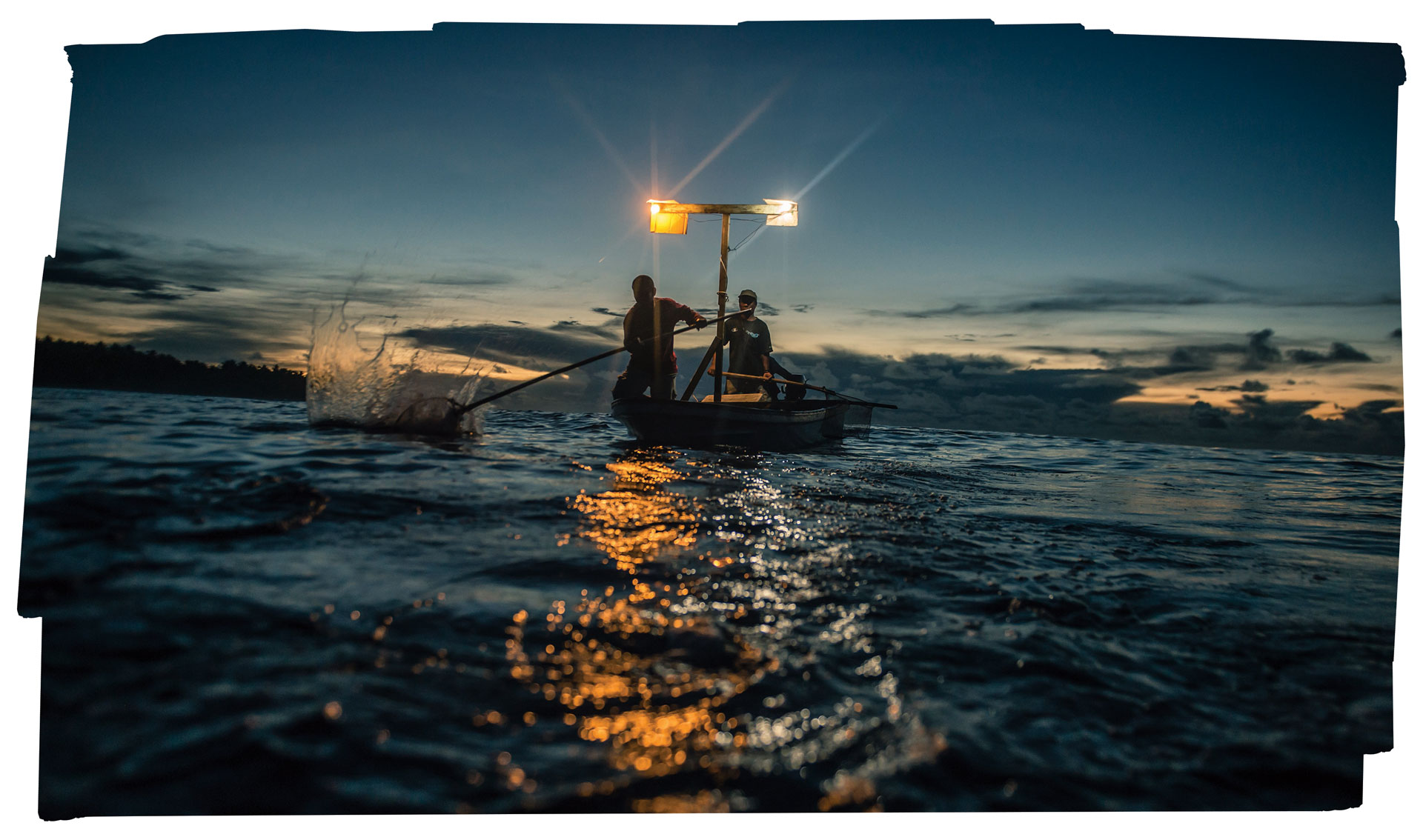Knowledge, Evidence, and Practice
KEY POINTS
- Conservation finance—which typically includes a combination of financial instruments—is needed in addition to sustainable livelihood opportunities to maintain the long-term financial sustainability of community-led conservation.
- Key enabling features of successful conservation financing solutions are ongoing investment in long-term capacity building for Indigenous and local community organizations; Indigenous and local community ownership and leadership of conservation financing efforts; clarity of tenure; political support; ongoing fundraising efforts; diversification of financing sources; clearly distributed roles and responsibilities within the financing strategy; private sector partnerships for enterprise-based solutions; and flexible funding to respond to new opportunities.
- Successful local to global financing partnerships generally involve strong connection to Indigenous and local community priorities, strong contextual awareness in grant-making, strong partnerships with Indigenous and local community organizations implementing the projects, and the ability to enhance political enabling conditions for difficult projects. NGO intermediaries often serve important partnership roles in these processes.
- Shifts in policy at the local, regional, and/or national level are often needed to provide the enabling conditions and avenues for Indigenous Peoples and local communities to formalize their rights over lands, waters, and resources, codify their authority in natural resource decision making, and participate in certain sustainable livelihood opportunities.
- Rates and patterns of diffusion typically depend on the characteristics of the natural resource management practice, the communities themselves, and the context. Supporting community networks and inter-community learning exchange are important ways conservation organizations can use their convening skills to foster diffusion of community-led conservation and practices.
KEY TERMS
Conservation Finance—mechanisms and strategies that generate, manage, and deploy financial resources and align incentives to achieve nature conservation outcomes.98 Conservation finance is aimed at funding the full costs of conservation and maintaining long-term financial sustainability.180
Diffusion—the process by which prior adoption of a practice in a population alters the probability of adoption for others.181
Durability—the likelihood of positive outcomes for people and nature achieved via community-led conservation initiatives to persist throughout time. Key components of durability include long-term conservation finance, an enabling policy environment, and diffusion/scalability of initiatives.
Scaling—the speed, patterns of adoption, and spread of community-led conservation policies, programs, projects, and practices.182 Can include growth of a practice in one place and replication of a practice to other places.
Durability of community-led conservation initiatives refers to the likelihood that positive outcomes for people and nature achieved will persist over time. Durability interacts with the four pillars of the VCA Framework by providing a strong foundation and enabling environment for lasting outcomes—likewise, the pillars of the VCA Framework are required to achieve aspects of durability itself. Key components of durability include long-term conservation finance, an enabling policy environment, and diffusion/scalability of initiatives.
Conservation Finance
See “Tool 18: Conservation Finance Guide” for guidance on supporting the scoping, planning, and development of conservation finance solutions.
Conservation finance is the practice of generating, managing, and deploying financial resources and aligning incentives to achieve conservation outcomes, and is aimed at funding the full costs of conservation—which are usually not completely covered by sustainable livelihoods initiatives—and maintaining long-term financial sustainability. Sustainable livelihood opportunities and conservation finance work synergistically to support dual outcomes for people and nature. Sustainable livelihood opportunities provide people with income to meet their personal and household needs, which allows people to lead secure and dignified lives, incentivizes sustainable natural resource management, and reduces unsustainable development pressures. Conservation finance creates a long-term funding stream for communities to pay for the management of their lands, waters, and resources based on their own vision of stewardship and natural resource management.
In most situations, a combination of financial instruments is leveraged (e.g., market incentives, fees, taxes, subsidies, public and private funding, investments/bonds) and this financing is disbursed via grants, performance-based payments, and microfinance. A recent report found the key features of successful conservation financing solutions to be ongoing fundraising efforts; diversification of financing sources; clearly distributed roles and responsibilities within the financing strategy; private sector partnerships for enterprise-based solutions; and flexible funding to respond to new opportunities.180 Further, the report concluded that success of Indigenous and local community-led conservation initiatives relies on conservation financing designed to empower Indigenous Peoples and local communities as stewards, not just beneficiaries, where “stewardship” is not just responsibility for natural resource management, but is understood to encompass ownership, decision making authority, and conservation embedded in the full social, economic, and cultural fabric of the community.
Conservation finance is foundational for the long-term success of initiatives to secure rights, increase capacities, strengthen participation in dialogue and decision making, and support sustainable livelihood opportunities—just as these pillars of the VCA Framework are critical to securing and maintaining conservation finance. For example, not only is conservation finance important for securing rights (e.g., through enabling the creation of an Indigenous protected area) but secure rights are often a requirement for accessing finance such as bank loans. Further, long-term finance can enable the ability to protect community lands and waters from outsiders and support the transfer of management to communities. This was the case with The Great Bear Rainforest Agreement, which, catalyzed by many years of First Nation-led advocacy, designated a large area of high ecological value on the Pacific coast of Canada for protection and ecosystem-based management. Through this agreement, First Nations have a strong role in governance, decision making, and management. Making this agreement possible required a significant financial commitment, which was secured through a conservation financing agreement called “Coast Funds.” This endowed trust fund will maintain long-term support for conservation efforts, and includes a fund to support sustainable enterprise. A significant outcome of this deal included formal and functional recognition of the community’s roles as owners and managers of the region’s resources.
For conservation finance to be successful in the context of community-led conservation, it needs the long-term capacity of communities and local institutions to take on leadership roles in generating, managing, and distributing financing. Capacity is required with respect to management of internal relationships and relationships with outside parties; land and resource management; ability and comfort in interacting with business culture and government processes; and financial management without compromising value.180 The process of obtaining conservation finance often involves supporting communities in developing their own community and resource use plans, which leads to greater leadership and decision making authority over how resources are used and allocated. Donors and intermediary NGOs should prioritize support for such capacity building. Many conservation financing mechanisms explicitly integrate funding to support governance and capacity-building. For example, federal funds are available to support governance and capacity-building for traditional owners of the Warddeken Indigenous protected area in Australia (owned and managed by the Warddeken Land Management company). The institutions and structures created or strengthened as part of securing conservation finance, can ultimately become involved in other initiatives (e.g., health, livelihoods, education, conflict resolution), leveraging existing and built capacity over time and reinforcing the overall enabling context for successful outcomes for people and nature.180
A recent study found that donor rules and requirements are the most frequently cited barrier for Indigenous and local community organizations to effectively access funding for tenure formalization and forest management.183 In many cases, prohibitive donor rules and requirements pertain specifically to legal recognition of Indigenous and local community organizations and/or resource-intensive project management and reporting stipulations. Many donors turn to intermediary organizations as a bridge, leveraging their legal standing as well as project management and administrative capacities to broker funds between donors and Indigenous Peoples and local communities. For example, in response to struggles in channeling funding to Indigenous and local community organizations, the Amazon Fund (Fundo Amazônia)l has in some cases partnered with intermediary institutions to re-grant funds and support the project and reporting requirements of large institutions such as Brazilian Development Bank, the manager of the fund. To address challenges deploying funds and maintaining compliance with donor requirements, funds are sometimes directed through local intermediary organizations that meet fiduciary requirements and are trusted partners of recipient Indigenous and local community organizations. Those organizations with deep grassroots connections, especially those with Indigenous leadership or significant experience working with local communities, are found in this work to be the most responsive to Indigenous and local community needs and priorities and, in turn, to serve as more effective intermediaries for financing.183
More broadly, Indigenous and local community organizations generally regard NGO intermediaries and private foundations as more responsive to their priorities than other donors, and better at providing direct funding. Related advantages of various NGO intermediaries include strong contextual awareness in their grant-making, strong partnerships with the Indigenous and local community organizations implementing the projects, and the ability to enhance political enabling conditions for difficult projects. In some cases, NGO intermediaries have enhanced these advantages through the inclusion of Indigenous and local community representatives in their governance or advisory bodies.183 Further research is needed to support donor adaptation of processes and accountability requirements to enable more direct financing of Indigenous and local community organizations. However, the aforementioned NGO intermediary advantages suggest important areas for focus, alongside opportunities for donors to enhance coordination and targeting with trusted intermediaries; reduce bureaucratic requirements; adapt financial mechanism structuring to local contexts; and significantly increase total funding for Indigenous- and local community-led conservation.
For effective long-term financing solutions, initiatives that initially benefit from strong external non-governmental organization (NGO) involvement require that requisite local capacity be in place before the NGO exits. It is important for local governance and capacity to be ready to carry on after an NGO partnership concludes to avoid the community experiencing detrimental interruptions in natural resource management and financing streams. For example, Northern Rangelands Trust—a non-profit supporting the capacity of community conservancies in northern Kenya—is piloting a program to “graduate” some of the conservancies that it has supported for 15 years, shifting the relationship to one with greater conservancy autonomy and self-reliance, and providing training on leadership and financial capacity for the conservancies to apply for funding directly themselves. The investment required for transition, particularly in areas that begin with extremely limited capacity, should not be underestimated.180 The same considerations that are made for conservation finance around building community capacity to take over long-term finance once the NGO exits apply to natural resource governance in general. The goal is eventual transition of project management to communities (if not already the case), which requires an active and healthy leadership succession plan to maintain capacity when those in leadership roles transition.
Policy
Community-led conservation often requires the coupling of policy change with natural resource management actions if the appropriate legal tools are not already in place.184 In this case, shifts in policy at the local, regional, and/or national level are needed to provide the enabling conditions for community-led conservation—specifically, for Indigenous Peoples and local communities to formalize their rights over lands, waters, and resources, and to codify their authority in natural resource decision making. Such policies could include formal recognition of Indigenous sovereignty and institutions by the national government, those that result in devolution of rights and management responsibilities to communities, those that create co-management arrangements between communities and the government, and those that establish bodies for meaningful Indigenous and local community participation in natural resource management decision making.
For example, in Brazil, the country’s 1988 Constitution set the stage for recognition of the differentiated rights of Indigenous populations, as well as promoted the creation of Indigenous Lands and Conservation Units.185 The National Policy for Environmental and Territorial Management on Indigenous Lands (PNGATI) was passed in 2012 with the aim of strengthening territorial management so that Indigenous Peoples and their representative organizations could conserve, defend, manage, use, and govern their lands to maintain their conservation value and promote the collective well-being of their Peoples. Through this policy instrument, Territorial and Environmental Management Plans are developed by Indigenous Peoples and their representative institutions. This is completed via a participatory, multi-stakeholder process that maps and zones areas of environmental, socio-cultural, and productive relevance for Indigenous Peoples, based on their knowledge.
In another example, Kenya’s 2013 Wildlife Conservation Act created a framework that legally defined and formally promoted the establishment of conservancies—a recognized land use offering communities improved land and resource rights and access to incentives as they engage in wildlife protection and other sustainable practices—providing a clear legal structure for community-led conservation.186 This was paired with the establishment of the Kenya Wildlife Conservancies Association, a new association to represent conservancies in policy-making at the national level. The law was the culmination of over a decade of efforts to get comprehensive legislation in place and coordinate input of environmental civil society organizations, and was imperative to create a context favorable for community-led conservation in Kenya. In both the Brazil and Kenya examples, conservation organizations worked in partnership with Indigenous Peoples and local communities to advocate for the necessary policy changes, as well as to support Indigenous and local community leadership in the implementation of the policies.
Just as an enabling policy environment is necessary for securing rights and participation in decision making, it is also critical for many of the livelihood opportunities that communities might pursue. Payment for environmental services (PES) systems—carbon markets for example—require that property rights are reasonably well defined and permanent as a condition of entry. In addition to clear property rights, publicly-administered PES mechanisms require relatively sophisticated legislative and regulatory frameworks to be in place. Enabling legislation to allow parties to enter into transactions and a legal framework for enforcing agreements is a general prerequisite. Similarly, livelihood opportunities involving user fees require a claim to an area to charge others for use and may require legislation at the local or national level, as well as a legitimate body that can collect the fees and administer the funds.180
Conservation practitioners partnering with Indigenous Peoples and local communities on shared human well-being and environmental goals should undertake a detailed review of local, Tribal, regional, and national policies in their situation analysis during strategy development. This includes, but is not limited to, policies recognizing Indigenous sovereignty and differentiated rights; designating resource management and zoning jurisdiction; forming governance bodies, multi-stakeholder processes, and representative institutions; and establishing PES systems. With this knowledge, conservation practitioners are better positioned to determine whether the policy context is favorable for community-led conservation, and where advocacy might be required to strengthen these enabling conditions.
Scaling and Diffusion
A challenge commonly faced by conservation organizations is how community-led conservation can be supported beyond the local scale. Scaling and diffusion of community-led conservation are important because they: 1) enable self-organization of Indigenous Peoples and local communities into higher-level governance groups for participation in rule and decision making at regional and national levels, and 2) ensure that the scale of the governance group matches the scale of the natural resource management challenge.187 Self-organization starts at the local scale, and it is critical that the governance groups that emerge nest within those that develop at larger scales, building on the pre-existing trust that has been established and retaining their autonomy.70 In this way, they also can leverage the capacity of higher level governance groups to manage issues that can be intractable at the local level, such as cross-boundary management and inter-group conflict.187 Multi-stakeholder dialogue—which was covered in a previous section—is an important conduit for scaling and diffusion, as it offers opportunities for Indigenous Peoples and local communities to engage in higher-level governance and decision making forums, share knowledge, and resolve conflict.
Diffusion refers to the spread of community-led conservation from one group to another, impacting larger spatial scales. Much of the literature on diffusion pulls from “diffusion of innovation” theory. In short, information about a particular initiative disperses from successful adopters to potential adopters through learning exchange and influence. Early adoption rates are often sluggish, because the small number of initial adopters limits the diffusion of the information. Slow initial growth then changes to a rapid growth phase, as an increasing number of adopters share their experiences with a large pool of potential adopters. As time goes on, the rate of uptake slows again as the pool of potential and willing adopters declines. Eventually, a saturation point is reached where all individuals that have had exposure to the initiative have either adopted it, or have rejected the initiative in its current design.182 Nonetheless, it is difficult to predict how adoption will go and how strong uptake will be based on initial (slow) rates of uptake. In fact, a recent study of community-based conservation programs did not find any examples of initiatives that achieved both rapid uptake and large-scale adoption, revealing an apparent tradeoff between speed of uptake and the final proportion of adopters.182 This implies that broad uptake takes time, which aligns with what we know about the importance of and time it takes to build trust and relationships.
Rates and patterns of diffusion typically depend on three key factors: 1) the characteristics of the natural resource management practice, 2) the communities themselves, and 3) the context.188 For example, diffusion appears to occur more rapidly with simple practices that are consistent with communities’ values and beliefs systems, where they can be tested and adapted to fit local contexts, and where the relative advantage of the practice is substantial. Diffusion is also more likely where communities are already familiar with the practice, are well connected to the outside world and each other, and where there is competition to develop new practices. Finally, diffusion is more rapid where political enabling conditions exist to support the practice, and where the geographic and cultural context are well-aligned with the practice.69,188-189
Table 8: Examples of activities to support factors of diffusion.69
| Key Factor for Diffusion | Example Activities |
|---|---|
| Natural resource management practice | Support design and implementation of practices in ways that are compatible with people’s values, needs, and lived experiences; Synthesize and mainstream information on practices in a way that is simple to understand and implement; En-hance visibility of or encourage communities to share information about practices and their results to facilitate social learning |
| Community | Facilitate inter-community learning exchange on natural resource management op-portunities; Support the development of inter-community networks and communities of practice; Facilitate and build capacity for multi-stakeholder dialogue |
| Context | Support the adoption of legislation which enables the implementation of community-led conservation; Where possible, support identification of compatibility between practices and contextm |
Table 8 describes some of the actions that conservation practitioners might take to support scaling and diffusion of community-led conservation practices. Support of inter-community networks and learning exchange are worth highlighting, as they are important means of fostering scaling and diffusion that draw on the strong convening skills held by many conservation organizations. Thinking back to “diffusion of innovation” theory, investment in inter-community networks and learning exchange increases the odds that successful adopters come into contact with potential adopters and are able to share experiences, educate, and influence to ramp up the diffusion rate. This was the case in North America, where The Indigenous Peoples Burning Network (IPBN) began in 2015 with a single landscape in the combined ancestral territories of the Yurok, Hoopa, and Karuk Tribes of Northern California, and has since grown to include participants from multiple pueblos in New Mexico, land managers from the Leech Lake Band of Ojibwe in Minnesota, the Klamath Tribes in Oregon, and the Alabama-Coushatta Tribe in Texas. The IPBN is a support network among Native American communities that are revitalizing their traditional fire practices in a contemporary context. Activities include strategic planning for revitalization of fire culture, fire training including both federal qualifications and culturally-based controlled burning, and promoting intergenerational learning. First steps often include people from one tribe visiting another’s homeland. Others engage through events where cultural connections to fire are integrated into fire training. Rooted in self-determination, the IPBN leadership team is guiding network growth and adapting the network’s structure to welcome new tribal landscapes.






